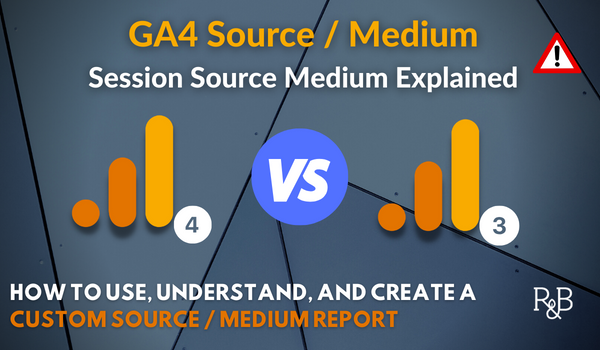Understanding Secondary Dimensions in Google Analytics: Meaning and Calculated Combination
Understanding Secondary Dimensions in Google Analytics: Meaning and Calculated Combination
Blog Article
Unveiling the Influence of Second Measurement in Google Analytics on Data Evaluation and Insights
In the realm of data analytics, the use of additional measurements within Google Analytics has actually arised as a pivotal device for removing deeper understandings and unraveling facility patterns that might or else remain covered. By peeling back the layers of main information sets, additional measurements offer a nuanced viewpoint that improves the understanding of user habits, site performance, and the efficiency of marketing strategies.
Checking Out the Idea of Second Measurements
Additional dimensions in Google Analytics provide added understandings by enabling customers to analyze main information in conjunction with an additional feature. By integrating secondary dimensions, customers can dive much deeper into the information and reveal beneficial connections that could otherwise go unnoticed - what is a secondary dimension in google analytics.
By checking out the numerous secondary measurements readily available in Google Analytics, users can open brand-new insights and optimize their digital advertising and marketing efforts. In significance, second dimensions serve as an effective tool for improving information analysis and driving actionable outcomes.
Enhancing Information Interpretation With Second Measurements
Having actually developed the fundamental understanding of additional dimensions in Google Analytics and their crucial duty in information analysis, the emphasis currently shifts in the direction of leveraging these second credit to improve the interpretation of analytics information (what is a secondary dimension in google analytics). By integrating secondary measurements into data evaluation, analysts can gain much deeper insights right into individual actions, web site performance, and marketing performance

Additionally, secondary dimensions help in contextualizing primary data metrics by giving additional layers of details. This contextualization help in comprehending the 'why' behind the data fads, aiding experts make informed optimizations and decisions to improve overall performance. Eventually, integrating additional measurements enriches the data analysis procedure, bring about even more calculated activities and purposeful understandings.
Discovering Hidden Insights With Secondary Dimensions
Checking out the midsts of analytics data with second dimensions discloses useful insights that would certainly or else continue to be obscured. By including second dimensions in Google Analytics, services can discover covert patterns, patterns, and connections that provide a more detailed understanding of individual actions and site performance. These extra layers of information permit analysts to delve much deeper right into the main measurements, such as traffic sources or landing pages, and acquire a more nuanced point of view on exactly how different variables communicate with each other.
Via using secondary dimensions, analysts can section and compare data throughout various dimensions, allowing them to recognize certain variables that influence user engagement, conversion prices, and overall success metrics. By combining the key dimension of 'tool classification' with the second dimension of 'age team,' marketing professionals can identify which age demographics favor accessing the website via mobile tools versus desktops. This degree of granularity equips companies to make data-driven choices and maximize their methods for far better results. Ultimately, discovering covert insights through secondary dimensions boosts the deepness and precision of information evaluation, causing more educated decision-making and boosted efficiency click for info outcomes.
Leveraging Additional Measurements for Actionable Analytics
Structure upon the insights revealed via second measurements in Google Analytics, services can now harness this enriched information landscape to drive workable analytics and tactical decision-making. By leveraging second dimensions, organizations can delve much deeper right into their information to remove beneficial patterns, fads, and correlations that may have formerly gone undetected. This deeper level of analysis enables organizations to get a much more detailed understanding of individual actions, campaign performance, and total site performance.
One secret benefit of utilizing second measurements for workable analytics is the capability to segment data based on particular standards. This division enables companies to customize their techniques and projects to different audience groups, causing a lot more targeted and effective advertising initiatives - what is a secondary dimension in google analytics. In addition, second measurements provide an even more alternative sight of customer communications, allowing companies to enhance their site content, style, and overall customer experience
Optimizing Decision-Making With Secondary Measurements
To boost calculated decision-making in analytics, leveraging additional measurements in Google Analytics can provide a more nuanced viewpoint on user habits and project efficiency. By including second measurements into data analysis, businesses can delve much deeper right into the specifics of their internet site visitors' communications and interaction patterns. This additional layer of details permits an extra comprehensive understanding of just how various variables, such as demographics, gadgets, or traffic resources, impact key efficiency signs.
 read alt="what is a secondary dimension in google analytics
read alt="what is a secondary dimension in google analytics"/>
Verdict
In conclusion, using secondary dimensions in Google Analytics plays an essential function in boosting information evaluation and revealing hidden insights. By discovering this concept, one can get a much deeper understanding of customer actions and make informed choices based upon actionable analytics. Leveraging secondary measurements permits a much see this page more extensive interpretation of information and optimizes the efficiency of decision-making procedures.

Report this page